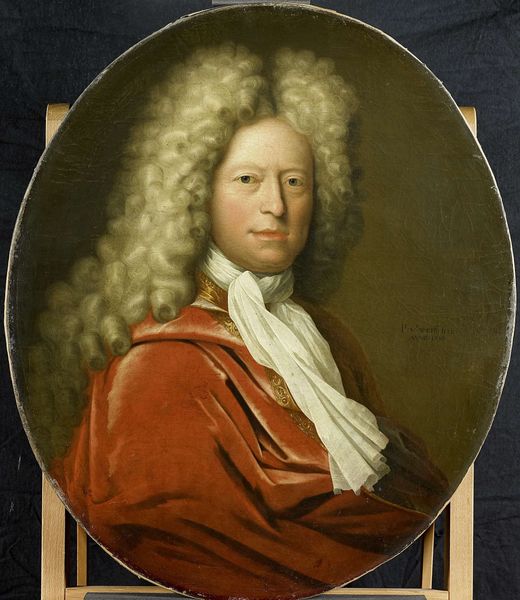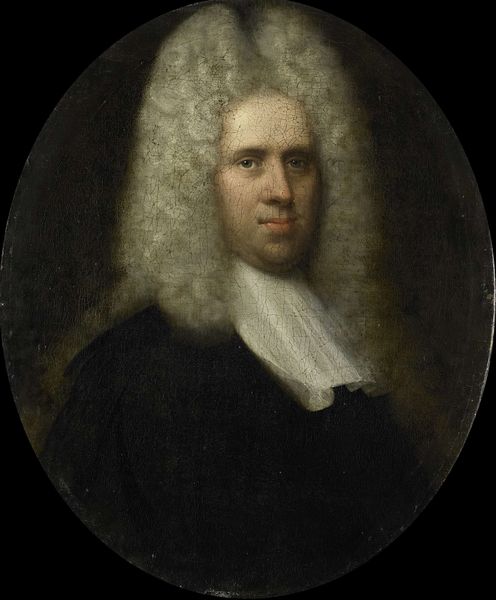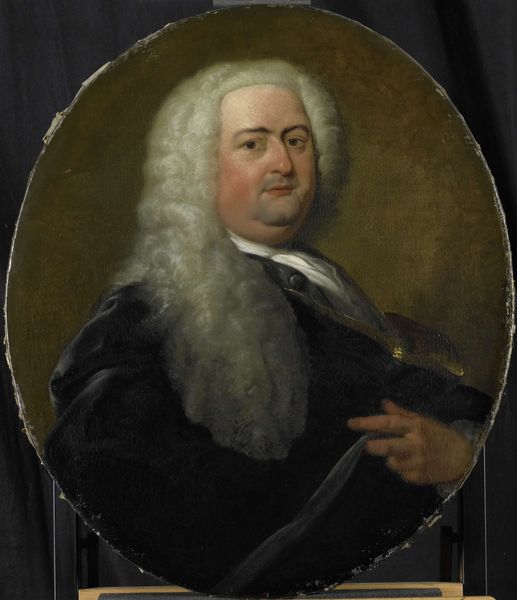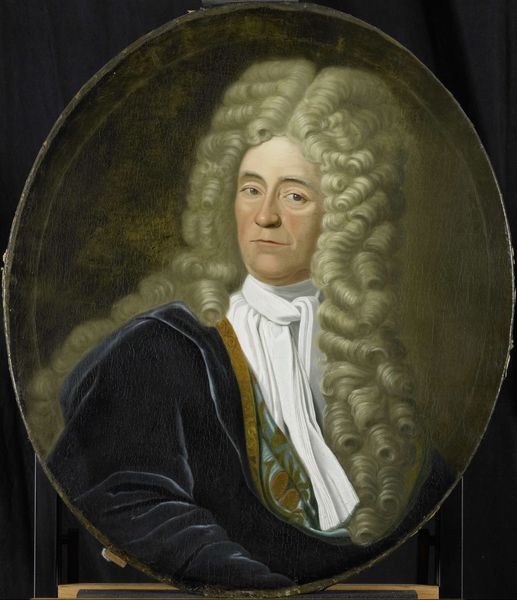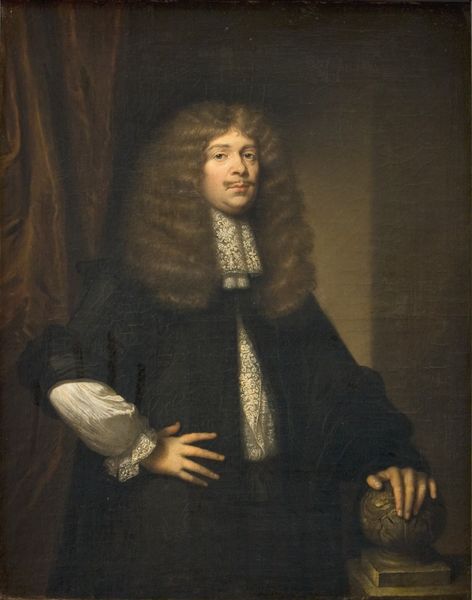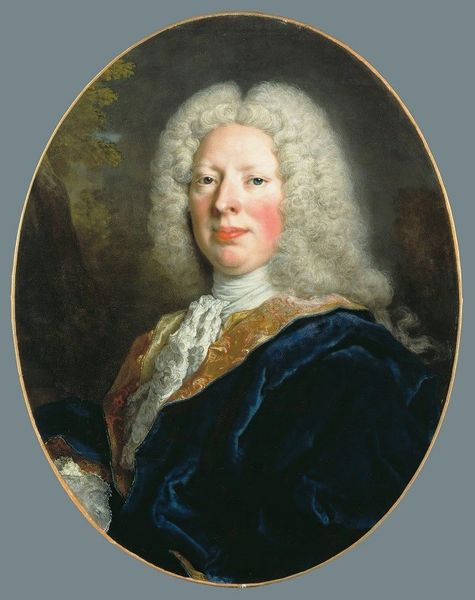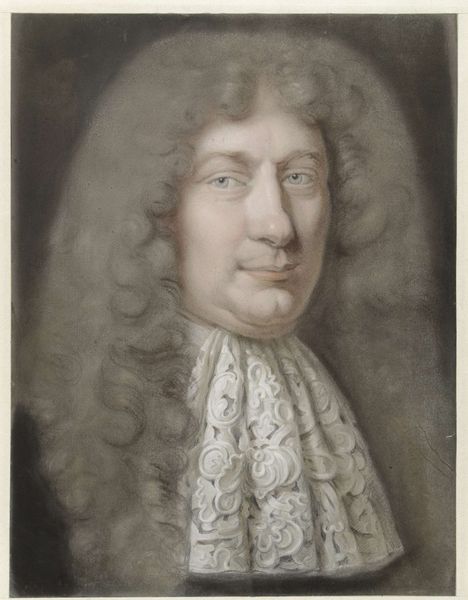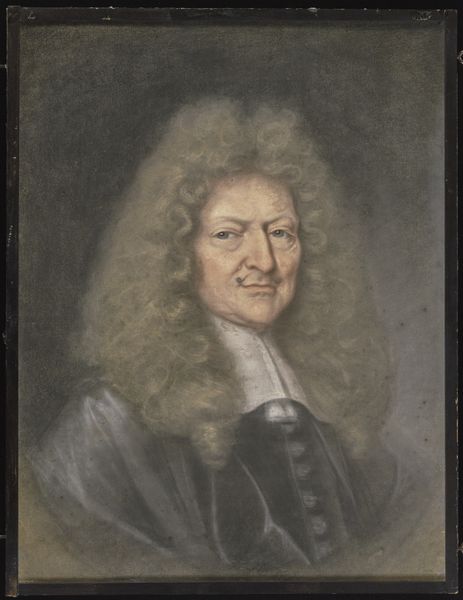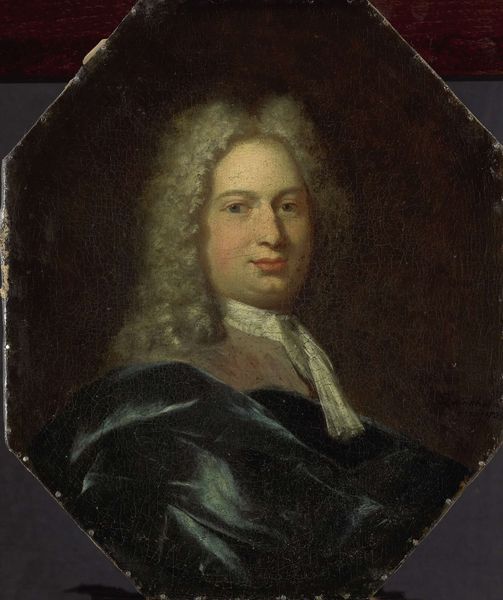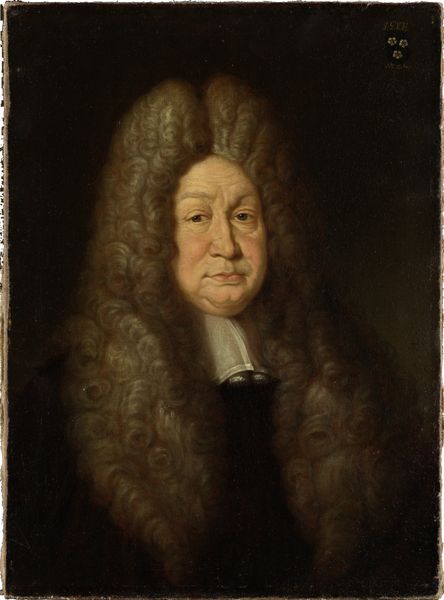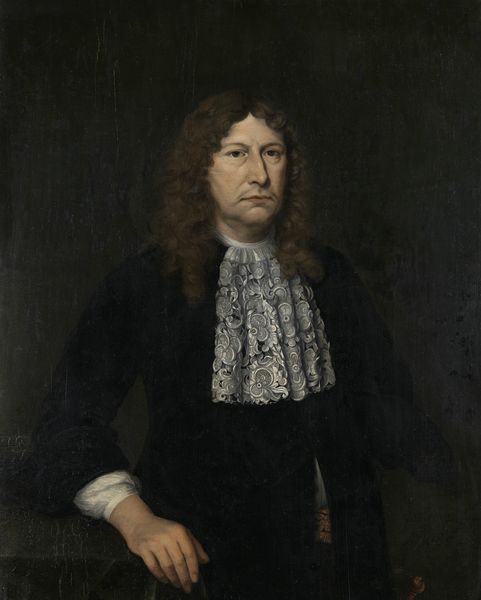
Portrait of Jacob Dane, Director of the Rotterdam Chamber of the Dutch East India Company, elected 1689 1700
0:00
0:00
painting, oil-paint
#
portrait
#
character portrait
#
baroque
#
portrait image
#
painting
#
oil-paint
#
portrait reference
#
portrait head and shoulder
#
genre-painting
#
portrait art
#
celebrity portrait
Dimensions: height 82 cm, width 68 cm
Copyright: Rijks Museum: Open Domain
Editor: This portrait by Pieter van der Werff, created around 1700, presents Jacob Dane. It's painted in oil and there's a striking contrast between the dark background and Dane’s ornate lace collar and the elaborately styled wig. How should we think about this work? Curator: Look at the textures and the precision in depicting the lace and the wig. Each element speaks to the material conditions and labor of its creation, doesn’t it? The lace, especially, would have been an incredibly valuable and highly skilled production. Editor: So, you’re suggesting the value isn't just in the final image but also the physical processes? Curator: Precisely. And consider the social context. Jacob Dane was a director in the Dutch East India Company. His attire isn’t just decorative; it's a performance of power and wealth derived from global trade and colonial exploitation. That lace, those pigments in the paint – where did those materials come from? Who produced them? Editor: It's a stark contrast to the usual romantic reading of portraits. I'm used to focusing on the sitter, not the supply chain. Curator: Exactly. It forces us to consider how this image participates in a broader system of consumption and production. How van der Werff secured those materials, and his status as the artist producing for this powerful patron. Does focusing on materiality alter how you view the subject? Editor: Absolutely. It makes me question the celebration of individual achievement when it’s built upon layers of global production. Curator: Then we’re on the same page. This isn't just a portrait; it's a material record of social and economic power. Editor: That shifts the focus from Jacob Dane's face to the world that produced him, quite literally through the materiality of the image. I learned to question my initial assumption!
Comments
No comments
Be the first to comment and join the conversation on the ultimate creative platform.

